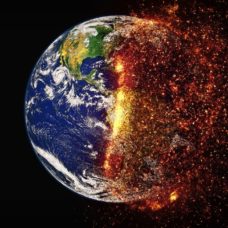A commonly overlooked symptom of climate change is the potential resurrection of ancient diseases currently trapped in ice and permafrost.
Permafrost is a geological phenomenon that refers to a soil that holds below 0°C for more than two consecutive years, representing about 20% of the earth’s surface. Permafrost is covered by a layer of soil, called “active zone”, which thaws in summer and allows the vegetative growth of native plants.
Dormant Pathogens awaken as permafrost melts down.Click To TweetIn some regions (mainly in the polar regions) soil layers, rocks, and sediment are permanently frozen and may have been since the last ice age.
Permafrost Melts, an Environmental Ticking Bomb
The melting of permafrost poses serious threats for local populations: land subsidence, road deformation, pipeline breakdown.
In addition to these material damages, scientists are worried about the environmental impact of permafrost meltdown.
Due to the gradual warming of the Earth’s atmosphere, these layers of soil, which have been frozen for thousands of years, contain gigantic quantities of organic matter composed of carbon and methane. The thawing process could release billions of tons of these greenhouse gasses into the atmosphere.
According to a recent study, large amounts of nitrous oxide (N20), commonly known as “laughing gas”, and a potent greenhouse gas, could escape permafrost.
It’s hard not to think of climate change triggering an unstoppable domino effect.
According to the report published in Proceedings of the National Academy of Sciences, researchers estimate N20 emissions could occur from about one-fourth of the Arctic.
Pathogens Awakening After Millennia of Cryogenic Sleep
In the Northern Hemisphere, which contains the regions most vulnerable to a warming atmosphere, the situation is worse.
Ice in the Arctic and Antarctic regions, Greenland, Alaska, northern Canada, and Siberia is melting quickly.
And here lies yet another life-threatening menace. Permafrost meltdown could also release nefarious viruses and bacteria that have been trapped and preserved, waiting for conditions conducive to their growth, i.e., higher temperatures.
Worse yet, permafrost could be home to pathogens of which we have zero understanding.
Russian researchers recently reported the discovery of a 30,000-year-old virus lurking in the Siberian permafrost. This virus is one of a group of other ancient viruses known as “giant viruses”, of which, four have been found since 2003.
Still in Siberia, last year, many people were sickened by permafrost anthrax. One child died and 23 others were infected. Scientists think the Bacillus Anthracis most likely originated from a reindeer corpse, trapped in permafrost for years, which thawed and released the anthrax bacteria into the atmosphere.
The year 2016 was the warmest on record and, according to data from NASA, 16 of the 17 warmest years, in our 136 year-recorded weather history, have occurred since 2001.
A Wild DNA Appears!
As ice retreats and permafrost thaws, we also gain access to genetic material long since buried or trapped. This is the case with the wooly mammoth, for example. Because of the latest sequencing technologies, these DNA records could be used to revive extinct species.
Yet, if you did resurrect the mammoth, you would be facing legal issues, as genetic sequences, like GMO crops, can be patented.
Which, of course, drives us to wonder. If a frozen pathogen awakens to threaten human life, which company would patent the cure? How powerful would they become?



















Comments (0)
Least Recent